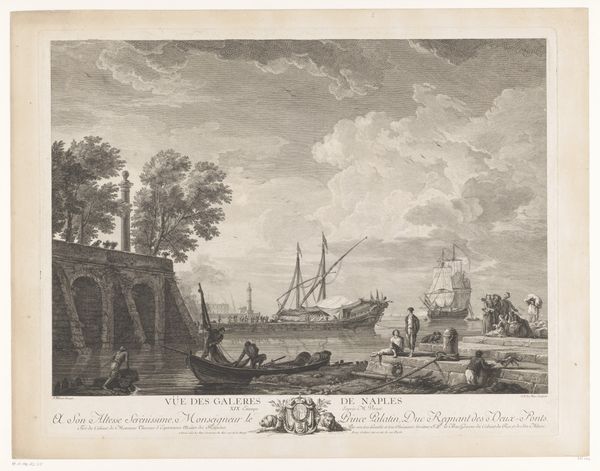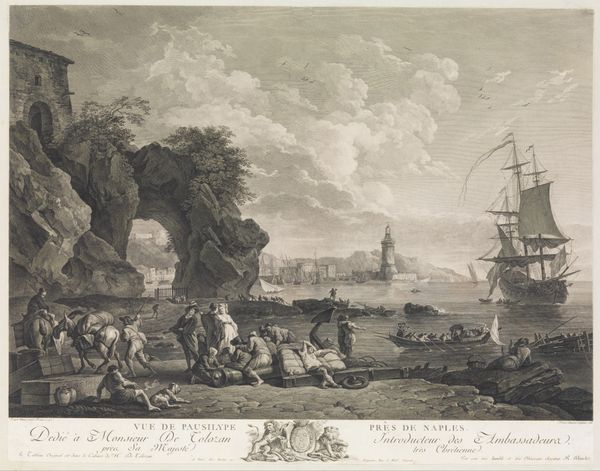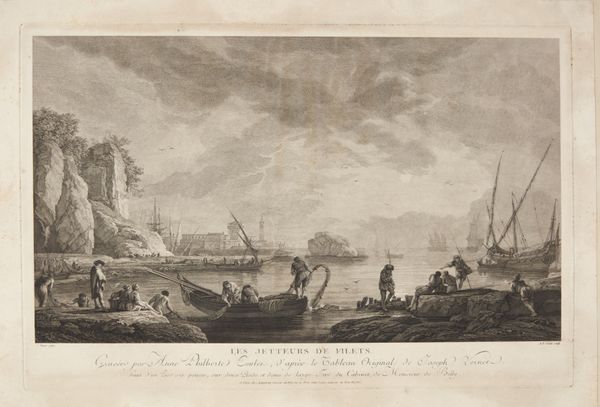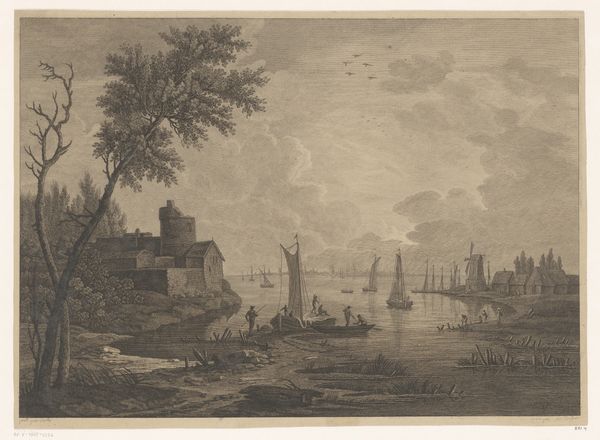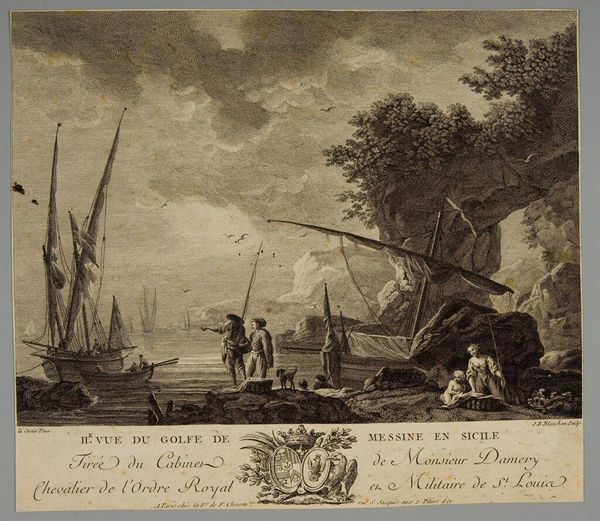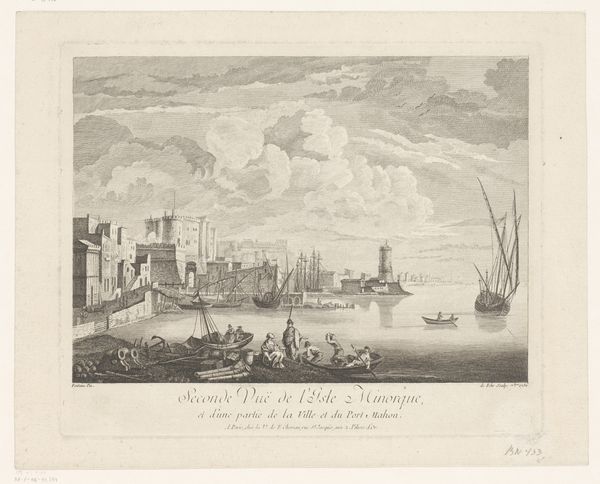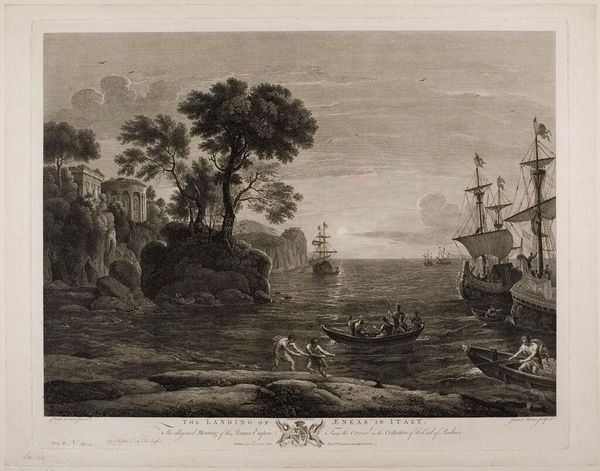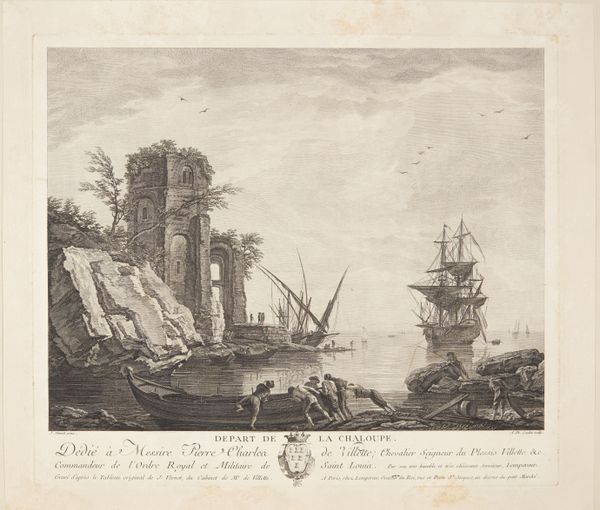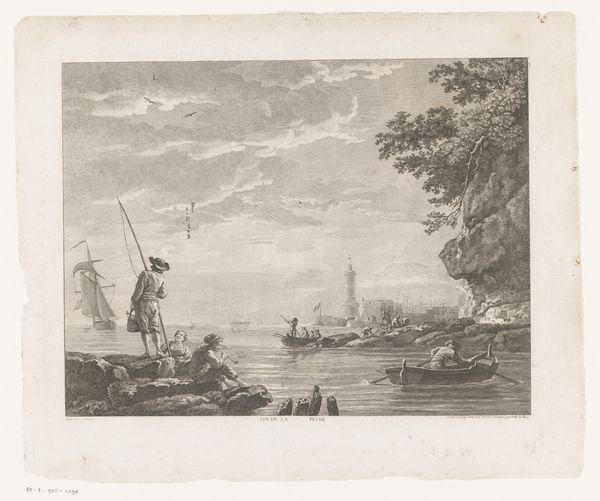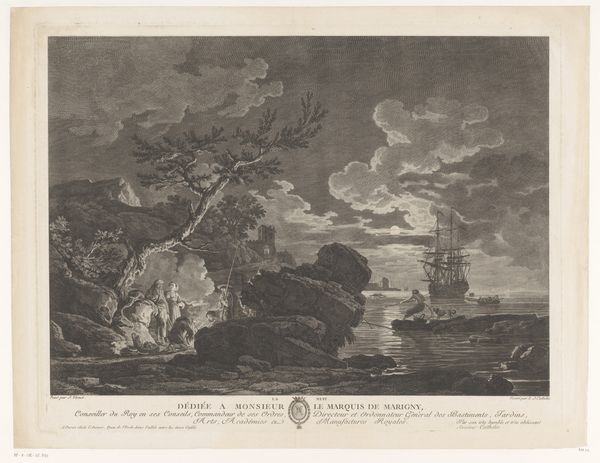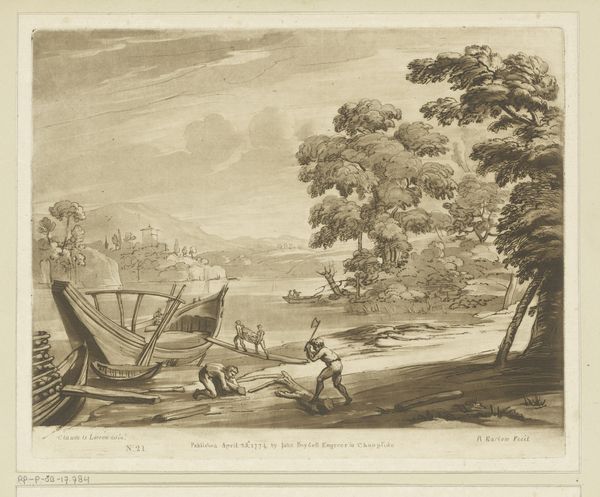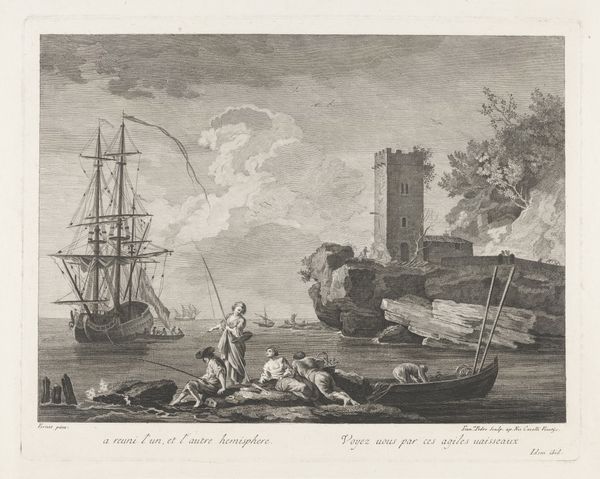
View of the Remains of the Temple of Venus on the Isle of Nisida Close to Pouzzol on the Gulf of Naples 1761
0:00
0:00
drawing, print, engraving
#
drawing
#
neoclacissism
# print
#
landscape
#
classical-realism
#
cityscape
#
history-painting
#
engraving
Dimensions: Sheet (Trimmed): 13 3/8 × 17 5/16 in. (34 × 44 cm)
Copyright: Public Domain
Curator: Here we have "View of the Remains of the Temple of Venus on the Isle of Nisida Close to Pouzzol on the Gulf of Naples," an engraving by Charles François Grenier de Lacroix, made in 1761. Editor: There's something quite serene about the ruin depicted. It feels like a commentary on the passage of time, seeing these figures interacting so casually with classical remnants. Curator: Precisely. Lacroix, working within the Neoclassical movement, evokes a deliberate connection to a glorious past, a past still resonating within the present. This is a visual statement about the cyclical nature of history and beauty. The Temple of Venus itself carries significant weight as a symbol of love and beauty from antiquity. Editor: Look at the technique though; the intricate linework must have been painstaking. And I wonder about the social context. This isn't just a straightforward landscape. It is also about wealth, leisure, and the 'Grand Tour'– where aristocrats toured Europe, acquiring souvenirs of these classical sites, recast here as a purchasable engraving. Curator: The figures, intentionally rendered in contemporary dress, underscore that temporal connection. The scene blends historical reflection with everyday life, highlighting the symbolic bridge between then and now. It also demonstrates the allure of this landscape, this historical place to be "present" at and re-discover, for that audience. Editor: True, but the materiality of the print itself matters. How widely were these images circulated? How did the relative ease of engraving transform how people experienced history, transforming it from stories and text into something visual and reproducible on paper? It suggests an early form of cultural tourism mediated through mass-produced imagery. Curator: It brings us face to face with an era's yearning for classical virtues while also offering a snapshot of 18th-century life. It really serves as a reminder of how symbols can become vessels carrying meaning through generations. Editor: I agree. By centering the process of the image’s making, we understand that cultural fascination itself has its own complex history that's tied up with material practices and technology.
Comments
No comments
Be the first to comment and join the conversation on the ultimate creative platform.
